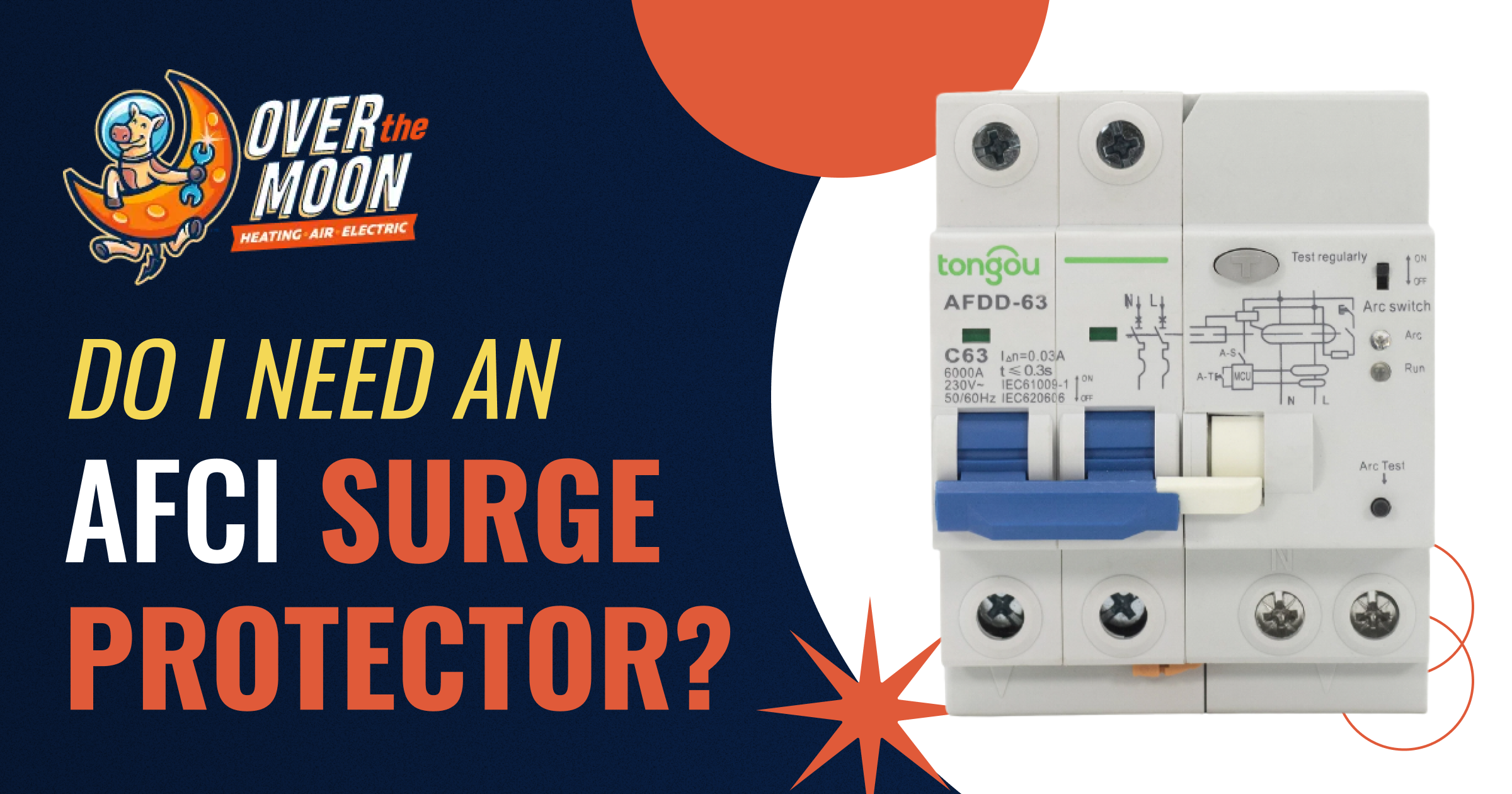Arc fault circuit interrupters (AFCIs) can prevent conditions that lead to electrical fires. The National Electrical Code (NEC) now requires them for residential properties. After a great deal of research into fires originating in branch circuit wiring, the NEC established its AFCI requirement in 2002. So the answer to whether you need an AFCI surge protector is—yes.
How Does an AFCI Work?
An AFCI offers protection against electrical hazards when there is a problem. If a hazardous arcing current is below a certain level, a fuse or circuit breaker won’t detect it. And arc faults often occur below that threshold as current is limited by arc impedance. An electrical arc that causes a fire can occur in any home, but older homes are more at risk whether due to age, misuse, or a lack of protection. An arc can be from line-to-ground to conduit, to a metal enclosure, or through moisture.
Why Does Arcing Occur?
Arcing is when electricity jumps from one source to another; this can occur within a damaged circuit or electrical component that has overheated. Damaged, worn-out, or incorrectly installed wiring often results in arcing. A loose or wet connection can cause an electrical arc as well. While some arcing is normal, especially with certain dimmers and switches (and fluorescent lighting), the latest AFCIs can distinguish between normal arcing and dangerous arc faults.
Arcing can be seen as a spark or heard as a buzzing sound from a switch or outlet. The resulting flash of electricity can be as hot as 35,000℉!
Where Should an AFCI Surge Protector Be Installed?
The NEC’s 2002 update added a requirement for AFCIs to be installed on circuits that power bedrooms. Later updates expanded the applications for AFCIs. They’re now required in living rooms, dining rooms, and all other residential gathering areas. In older dwellings, a branch/feeder AFCI circuit breaker can be installed for two-wire circuits; it can detect short circuits of 75 A or above (an overcurrent protective device wouldn’t detect this). However, a three-wire circuit has an additional grounding conductor that can detect arcing at levels below 75 A.
How Does an AFCI Differ from a GFCI?
Ground fault circuit interrupters (GFCIs) are also important in protecting your home. But their purpose differs slightly from AFCIs. Rather than arcing, a GFCI monitors current. If there is a spike or loss of power, the device cuts the flow of electricity to prevent shocks caused by ground faults or leaking electrical current. It has been a code requirement in kitchens, bathrooms, and garages as well as outdoor outlets for some time.
Both AFCIs and GFCIs have a test switch. They should be tested about once every month. Instead of being installed as an outlet, an arc fault circuit interrupter is installed at the circuit breaker. To test it, open the electrical service panel and press the “test” button above the circuit breaker switch. This should cause the AFCI to trip and for the switch to move to the “off” or “trip” position, which means it’s working normally.
To reset the circuit breaker, turn it “off” and then back “on”. If the AFCI fails to trip when you press the “test” button, contact an electrician to evaluate the problem.
Over the Moon Can Help with Your AFCI/Electrical Needs
Our licensed electricians are familiar with the latest codes regarding AFCI surge protector installation. They are also trained to provide any type of electrical, cooling system, or heating service for customers in the Milwaukee area. For installation of circuit interrupters and surge protectors, or an in-home evaluation, schedule service online or call 262-240-6397 today.

